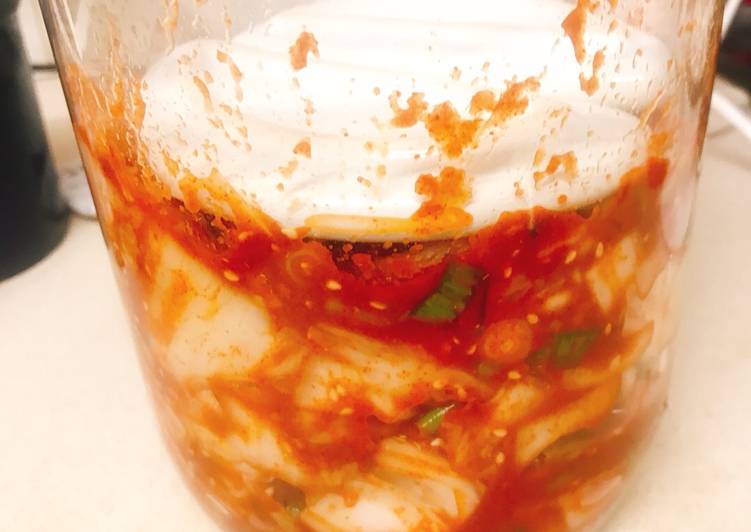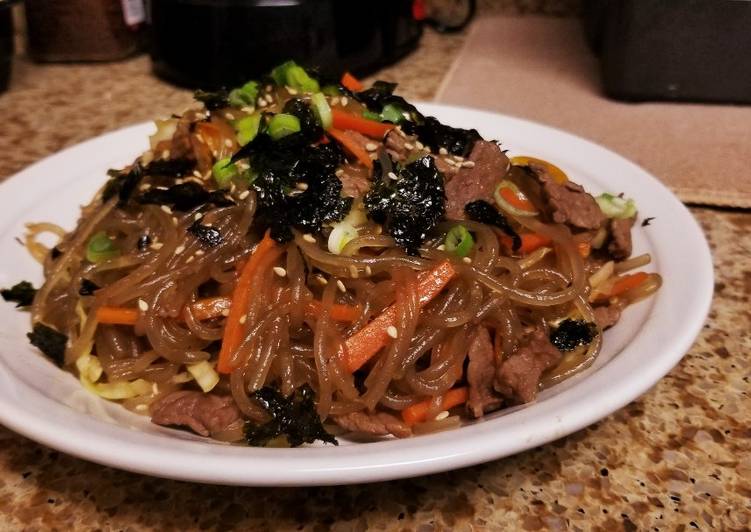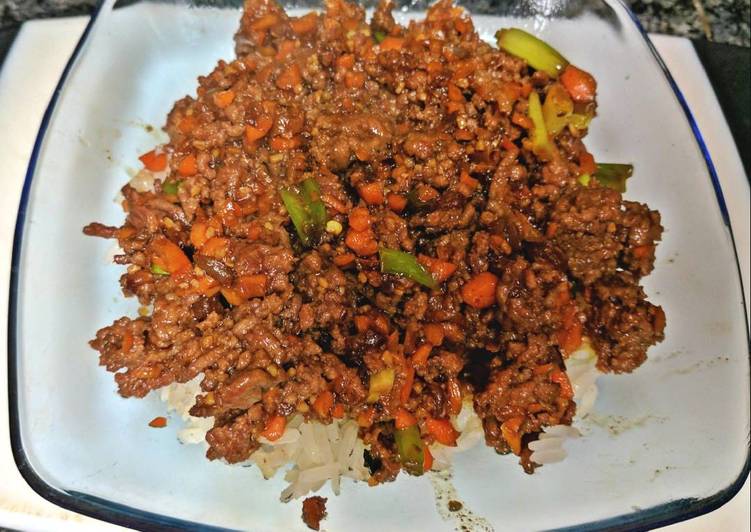
Hey everyone, I hope you’re having an amazing day today. Today, I will show you a way to make a special dish, kimchi. It is one of my favorites food recipes. For mine, I will make it a bit unique. This will be really delicious.
Kimchi is a traditional Korean dish made of seasoned vegetables and salt. Koreans eat it at nearly every meal. It can be fresh, like a salad, or it can be fermented.
Kimchi is one of the most well liked of recent trending meals in the world. It’s appreciated by millions every day. It is simple, it is quick, it tastes delicious. Kimchi is something that I have loved my whole life. They are nice and they look wonderful.
To get started with this recipe, we must first prepare a few ingredients. You can have kimchi using 23 ingredients and 16 steps. Here is how you can achieve it.
The ingredients needed to make Kimchi:
- Prepare 2 Chinese leaf cabbages (I bought two of them and had about 900g for two.)
- Make ready 90 g salt (10-12% of cabbage preferably sea salt)
- Get 450 ml (10-12% of cabbage x 5) water
- Prepare [Sauce]
- Take 1/2-1 apple (about 200-400g)
- Get 2-4 cloves garlic (about 40g)
- Take about 50 g Root ginger, skin peeled
- Make ready 1 bunch spring onion
- Make ready (option) 1/3 bunch of Chinese chives (nira), if you can get them. Cut into 3cm. If you do not have it, cut half of spring onion 3cm and the other half small
- Prepare 50 ml fish sauce (I could not get Korean 魚醤 in the UK.)
- Prepare 1-2 TBS fine chilli powder (if Korean chilli, 3 TBS)
- Make ready 1-2 TBS coarser chilli powder (if Korean chilli, 3 TBS)
- Take 2 tsp sugar
- Make ready kelp Kombu, optional
- Get niboshi, optional
- Make ready dried shrimp, optional
- Get Shiokouji, optional
- Prepare sesame seeds, optional
- Make ready honey, optional
- Prepare [Optional vegetables]
- Prepare Daikon radish
- Take cucumber
- Make ready carrots
Kimçi, ayrıca kimchi, gimçi, gimchi veya kimchee olarak da bilinenen, mayalanmış kırmızıbiber ve sebzelerden. Отмена.. Preparing kimchi is fairly easy, but it does take a bit of time. Open the jar briefly to let out the. See more ideas about Kimchi, Kimchi recipe, Maangchi.
Instructions to make Kimchi:
- Cut Chinese cabbages into serving sizes. Traditionally, cabbages are not cutting into serving sizes and put sauces between leaves. - However, this way is much easier to handle! So cut cabbages.
- Divid them into hard parts and tender leaves.
- Wash them under running water and drain them in a colander.
- In a big bowl or a big pan, sprinkle salt on to harder leaves and pour water. (The amount of salt is 10-12% of cabbage and water is 5 times of salt). Then put a plate and put something as a weight.
- Leave them for about 30 mins and add softer leaves. Then put plate and a weight on the top again. And leave it for another two and half hours or so.
- After about three hours in total, rinse them under running water and drain them. Taste it. If it is too salty, put them in freshwater and get rid of salt a little bit. Make the salt level as Japanese asatzuke: not too salty but salty. Leave them in a sieve for about 3 hours in order to drain excess water. Or if you are in hurry, squeeze by hands and get rid of the excess water without waiting for three hours.
- While waiting for the cabbage to dry, make the sauce. (optional "dashi" stock) If you have kelp and niboshi, boil water. Pour over kelp and niboshi and leave until it becomes room temperature. This “dashi” will gives depths to Kimuchi. You only need small amount (30ml, 2 Tablespoon) for this but you and use rest for other dishes.
- Peel the ginger. Please use tea spoon to peel it. It is the safest and easiest way to peel ginger. Usually, Brtish people do not know about it. Peel the garlic as well.
- Cut spring onion. Half of them as small pieces and the other half about 3cm. If you have Chinese chives (Nira), please use them and cut Nira as 3cm and all spring onion small! It will taste much better with Nira but I cannot find it here. I think that you could get it in Japanese or Chinese supermarkets in London. You could also use normal chive instead as well.
- Put peeled ginger, garlic and apple in a food processor. Make purée.
- Mix two types of chilli powders in a bowl and mix well. Use coarser and finer ones, if you do not have two types, just use one. Try to use a finer chilli and coarser chilli which gives better flavours. But if you cannot find two types of chilli powders, just used one. Mix both chillies well in a bowl. If you have Korean chilli powders, you probably need more than UK ones as they are milder and they are better for Kimchi.
- Add all sauce ingredients, including the purée and "dashi" stock into a big bowl except the chilli powders and mix them well. Please start to add less than half of the chilli powder mix. Then, add chilli powder mix little by little to suit your taste. If you add all at once it may become too hot for you and it would be impossible to be undone. Therefore, please start with a smaller quantity. You could add a small portion of your former Kimchi sauce or Kimchi to accelerate the fermentation.
- The beauty of homemade Kimchi is you can make as you like. You could add more garlic, ginger, apples, more spring onion, or add chives etc. You could add Kelp, niboshi or dried fish, honey, shiokouji 塩麹 etc to give complex taste when you ferment it. So, play with your sauce and try to find your perfect Kimchi! And you can definitely make much tastier Kimchi than bought ones!
- Then, add cabbage and mix them with hands with gloves. I use disposable plastic gloves. Then after mixing well, put them into a clean container. I use a Kilner fermentation bottle set which is great for Kimuchi.
- Leave it in a relatively cool place in the house for at least three days and it is ready to eat! It will change its taste according to the fermentation.
- I could not get Korean fish saice 魚醤 but I was able to buy this from Ocado.
Get KIMCHI.finance (KIMCHI) price, charts, volume, market cap, exchange list and more. Kimchi Pancake (김치전 Kimchi Jeon) evokes a special memory or feeling for many Koreans, especially for those who grew up or currently live in the countryside (시골 shigol). Kimchi is a traditional Korean dish of fermented vegetables, the most common of which are napa cabbage and daikon radish. In addition to being served as banchan, Korean side dishes presented as. The classic Kimchi Jjigae (Kimchi stew) recipe with some fatty pork.
So that is going to wrap this up with this special food kimchi recipe. Thank you very much for reading. I’m confident that you will make this at home. There is gonna be interesting food at home recipes coming up. Don’t forget to save this page in your browser, and share it to your loved ones, friends and colleague. Thanks again for reading. Go on get cooking!


